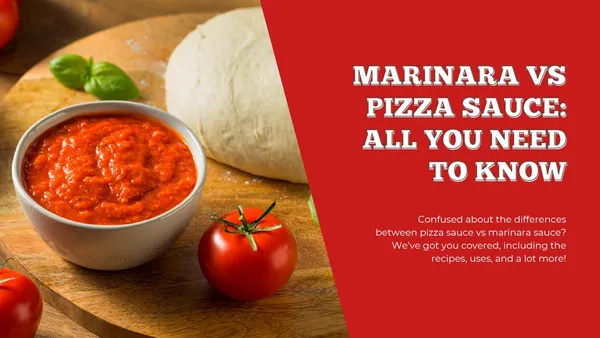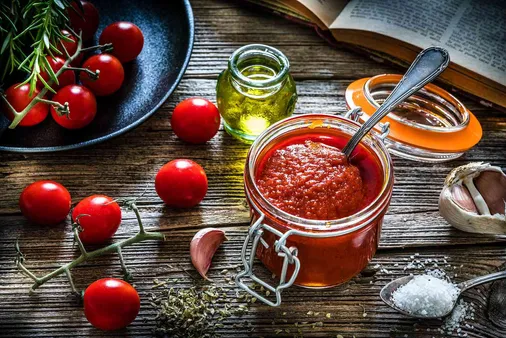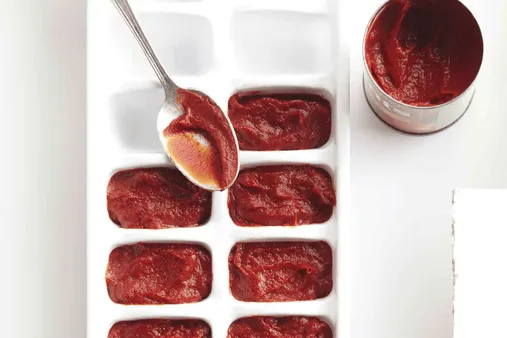Table of Contents
"Tomato sauce" and "tomato paste" are terms often used interchangeably, but they serve distinct purposes in cooking. At tauhuichiban, we aim to clarify these differences to elevate your cooking experience. Whether you're making a quick pasta dish or a hearty stew, understanding the unique properties of each can significantly enhance flavor profiles.
Key Takeaways on Tomato Sauce vs. Paste | |
|---|---|
#1: | Sauce is thinner with added seasonings; paste is thicker without additives. |
#2: | Use sauce for liquid bases; use paste for intense flavor without extra liquid. |
#3: | Substitution requires adjustments in water content or seasoning. |

Discover The Difference: Tomato Sauce Vs. Paste
Understanding the Difference: Tomato Sauce vs. Paste
Texture and Concentration
Let's start with the basics. Tomato sauce and paste are two popular forms of tomatoes, but they differ significantly in terms of texture and concentration. Tomato sauce is a liquid with a smooth, blended consistency, often with added seasonings and herbs. On the other hand, tomato paste is a super-thick, concentrated form of tomatoes with minimal water content.
Product | Texture | Concentration |
|---|---|---|
Tomato Sauce | Liquid | Less concentrated |
Tomato Paste | Super-thick | Highly concentrated |
Additives and Seasonings
Another key difference between tomato sauce and paste lies in the additives and seasonings. Tomato sauce often includes herbs, spices, and other ingredients to enhance flavor, whereas tomato paste is usually free from additives, allowing you to control the flavor profile. This makes tomato paste an excellent choice for those who prefer a more neutral taste or want to add their own seasonings.
Nutritional Density
When it comes to nutritional density, both tomato sauce and paste offer some benefits. Tomato sauce is a good source of lycopene, an antioxidant found in tomatoes, while tomato paste is higher in fiber and potassium due to its concentrated nature. However, it's essential to note that tomato paste is often used in smaller quantities, so the nutritional benefits may vary depending on the recipe.
Uses and Applications of Tomato Sauce and Paste
Tomato Sauce: Your Go-To for Saucy Goodness
Imagine tomato sauce as the friendly giant of the tomato world. It's what you reach for when you want to add a burst of tomato flavor and create a saucy base for your dishes. Think of your favorite pasta dishes – spaghetti and meatballs, lasagna, or even a simple tomato-based soup. Tomato sauce is the star ingredient that brings those recipes to life! It's like the comfy sweater of the culinary world – familiar, versatile, and always a crowd-pleaser.
Tomato Paste: The Flavor Booster
Now, let's talk about tomato paste – the small but mighty contender. This concentrated wonder is like the superhero of your pantry, swooping in to add a powerful punch of tomato flavor without adding too much extra liquid. A little goes a long way with this one! You only need a spoonful or two to transform your stews, chilis, or even homemade pizzas into flavor-packed masterpieces. It's like that secret ingredient that makes everyone wonder, "What is IN this? It's SO good!"

Uses and Applications of Tomato Sauce and Paste
How to Substitute and Adjust for Desired Flavor
Substitution 101: The Basics
Now that we've explored the differences between tomato sauce and paste, it's time to talk about substitution. Yes, you can swap one for the other, but it's essential to understand the consequences. When substituting tomato sauce for paste, you'll need to reduce the water content by simmering the sauce until it thickens. On the other hand, if you're using tomato paste instead of sauce, you'll need to add more liquid to achieve the desired consistency.
Think of it like a math problem: if you're using tomato sauce in a recipe that calls for paste, you'll need to subtract some of the liquid. If you're using tomato paste in a recipe that calls for sauce, you'll need to add some liquid. Simple, right?
Substitution Scenario | Adjustment Needed |
|---|---|
Using tomato sauce instead of paste | Simmer sauce to reduce water content |
Using tomato paste instead of sauce | Add liquid to achieve desired consistency |
The Art of Flavor Adjustment
When substituting tomato sauce and paste, it's not just about the texture – it's also about the flavor. Tomato sauce often has added seasonings and herbs, while tomato paste is more neutral. This means you may need to adjust the amount of salt, sugar, or spices in your recipe to balance the flavor.
Remember, flavor is subjective, so taste as you go and adjust accordingly. If you're unsure, start with a small amount of the substitute ingredient and add more to taste. It's better to err on the side of caution and add more flavor later than to overpower your dish.
- Taste and adjust seasoning as needed
- Keep in mind the flavor profile of the original ingredient and adjust accordingly

How to Substitute and Adjust for Desired Flavor
Final Thought
In conclusion, while both tomato sauce and paste originate from tomatoes, their textures, concentrations, and uses vary greatly. By mastering when to use each product based on your recipe's needs, you can achieve richer flavors in all your dishes. Remember that adjustments may be necessary when substituting one for the other to maintain desired tastes.